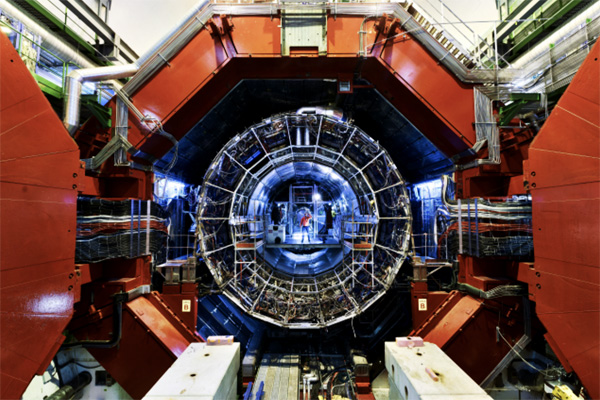Lead transmuted into gold at Large Hadron Collider, CERN

[Interior of ALICE detector, Photo Credit: CERN]
This May, scientists at CERN have confirmed the conversion of lead into gold using 2018 data from the Large Hadron Collider (LHC), fulfilling the ancient alchemical dream of transmuting base metals into precious ones.
Although the resulting gold nuclei are both fleeting and infinitesimal in quantity, the experiment represents the most rigorous demonstration of nuclear transmutation under extreme, controlled conditions to date.
Published in Physical Review Journals, these findings stem from data gathered during Run 2 (2015–2018) of the ALICE experiment known as “A Large Ion Collider Experiment,” one of the LHC’s four major detectors.
During this period, researchers estimate that approximately 86 billion gold nuclei were produced.
The transformation occurs through a remarkable process: when two lead nuclei, each containing 82 protons, accelerate to 99.999993% the speed of light and pass close to each other without colliding, their ultra-peripheral interactions generate electromagnetic fields intense enough to unbind protons from atomic nuclei.
When exactly three protons are stripped away, the remaining nucleus becomes gold, which contains 79 protons.
To identify such occurrences, the ALICE detector’s Zero Degree Calorimeters (ZDCs) were instrumental in isolating these events.
By measuring the characteristic signatures of proton and neutron ejections, the detectors distinguished between nuclei that had lost zero, one, two, or three protons—corresponding to lead, thallium, mercury, and gold, respectively.
Although the gold nuclei fragment almost immediately after formation, their transient existence is confirmed by the particle signatures they leave behind.
“It is impressive to see that our detectors can handle head-on collisions producing thousands of particles,” said ALICE spokesperson Marco Van Leeuwen, “while also being sensitive to collisions where only a few particles are produced at a time.”
During lead-lead collision cycles, gold nuclei were generated at an average rate of approximately 89,000 per second.
Nevertheless, even at that rate, the total mass produced across four years amounts to just 29 picograms—billions of times less than what would be needed for visible recovery.
Moreover, none of it survives for extraction.
All gold nuclei formed in this fashion inevitably collide with internal components of the LHC and disintegrate, leaving only traces for analysis.
From a technical perspective, producing gold nuclei actually creates complications.
These events contribute to beam degradation and energy loss within the collider, making their occurrence more of a nuisance than a novelty.
But the true scientific value lies elsewhere.
It is not in the material output, but in the precision with which such rare transformations can now be observed and measured.
As ALICE collaboration member Uliana Dmitrieva noted, the analysis represents the “first to systematically detect and analyse the signature of gold production at the LHC experimentally.”
While earlier CERN facilities detected isolated instances of proton-stripped nuclei decades ago, this is the first time such transmutations have been observed at high energies, with sufficient frequency and resolution to permit systematic study.
Beyond the glamour of modern-day alchemy, the results yield critical insights for high-energy nuclear physics.
The process of “electromagnetic disassociation,” which causes protons to separate from the nucleus, remains a leading cause of beam loss in heavy-ion colliders.
According to ALICE physicist John Jowett, the results “test and improve theoretical models” that govern beam dynamics and inform the design of future accelerators.

- Minkyu Koo / Grade 10
- Chadwick International School

![THE HERALD STUDENT REPORTERS [US]](/assets/images/logo_student_us.png)
![THE HERALD STUDENT REPORTERS [Canada]](/assets/images/logo_student_ca.png)
